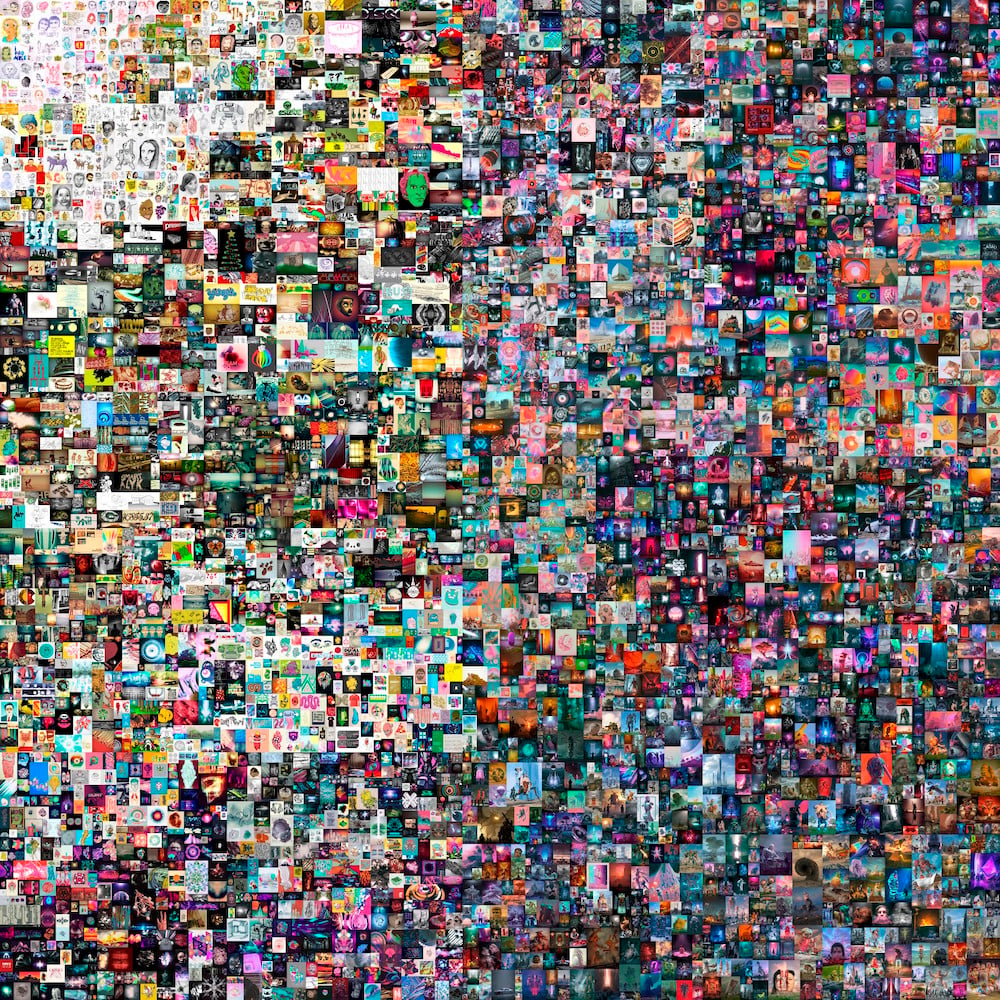Auctions
Christie’s Hopes to Open a New Frontier of the Art Market With the First-Ever Major Auction of a Wholly Digital Blockchain Artwork
The starting price for the work is just $100.

The starting price for the work is just $100.

Eileen Kinsella

Given the incessant buzz about non-fungible tokens (or NFTs) of late, it was only a matter of time before the excitement rippled into the art industry.
That time has come. Christie’s has announced the sale of the first-ever purely digital artwork to go to auction: Everydays—The First 5000 Days by Mike Winkelmann, who goes by the name Beeple. It will be offered in a standalone online sale sale aimed at new and younger collectors.
By way of background, on May 1, 2007, the artist, whose work focuses on society’s alternating obsessions and fears of technology, set out to create and publish online a new artwork every day—a task he has been at for 13 years.
The works, known as “Everydays,” come together in the Christie’s lot as a composite of every single individual image put into a single place.
“Together, this work presents an extensive glimpse into Beeple’s artistic journey from his early days of anonymity to the digital art star that he is today,” according to a statement from Christie’s.
The starting price for the work, which bidders can throw money at from February 25 through March 11, is just $100.
For the uninitiated (ahem, us included) Beeple’s work carries an NFT, a unique digital token encrypted with the artist’s signature and individually identified on a blockchain, effectively verifying the rightful owner and authenticity of the creation.
According to Christie’s, the NFT for this work was generated by MakersPlace, a marketplace for digital creators.
Christie’s postwar and contemporary specialist Noah Davis compared the legitimization of NFTs to that of Street Art.
“Not unlike the advent of Street Art as a blue chip collecting category, NFT-based art is on the threshold of becoming the next ingeniously disruptive force in the art market,” he said in a statement.
Davis said the auction house sees this “as a pivotal moment for the future of New Media and even the practice of collecting itself,” adding that technology can now effectively prove ownership and the “true scarcity” of a digital artwork.
The winning bidder eventually gets a digital file encrypted with the signature of the artist. The owner’s name is also registered as the owner within the blockchain, making it difficult to dispute ownership, and easy to transfer title. All of this is processed through the buyer’s digital wallet.
In late 2018, Christie’s tested the waters for artwork created via Artificial Intelligence when it offered Portrait of Edmond de Belamy (2018), one of a group of portraits of the fictional Belamy family created by an AI trained by Obvious, a Paris-based collective.
That work smashed expectations when it hammered for $350,000 after a lively bidding war that lasted for more than six minutes.
The final price, with premium, was $432,500—a whopping 4,320 percent increase from the presale high estimate of $10,000.